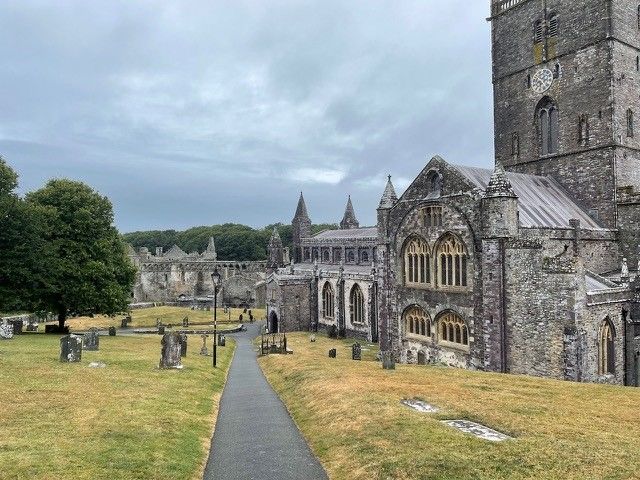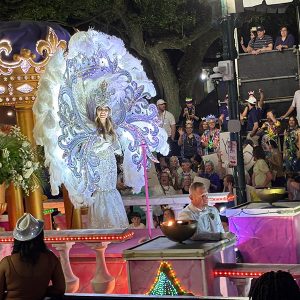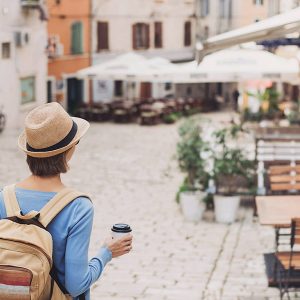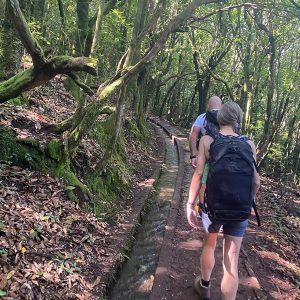“In my next life I want to be a bumblebee,” said my companion, as we sat atop a hillock on Wales’ St Davids Peninsula. We were looking out to sea, resting our walker’s legs, and daydreaming.

“Like that one?” I asked, pointing towards a bee that was bouncing between knapweeds, dispersing pollen as it went.
“Exactly,” my companion replied, spreading one arm in a wide arc before her to show the many insects around us. Each had a sting, but none was troubled to use it, as they were busy guzzling nectar and being content. Pembrokeshire has developed rewilding into an artform and is showing the way to the world. No wonder the bumblebees like it, I pondered.
These days, it is difficult to avoid environmental discussion and what a mess mankind is making of the planet. There is much talking, repeated pledges, yet limited action. Environmental damage seems frequently someone else’s problem despite it being an issue that affects the world.

I had decided to visit St Davids, the smallest city in the United Kingdom, thanks to its population of 1600. It seems barely a village, although has a City Hall and a huge cathedral, which attracts 300,000 visitors every year. St Davids is environmentally friendly, its vegetation growing so freely that it is sometimes hard to even see the road. Car windscreens are once again insect-splattered, and there is a bug farm to entice children, even wrinkly ones like me.

The city comes with an impressive history and is named after the patron saint of Wales, none other than St David. No one knows when the infant David was born, said to be beside the well of a remote tumbledown chapel on a nearby windy promontory, during a fearsome storm. Many know when he died, the 1 March 589. It is why 1 March is St David’s Day. David, who was first named Deewid, was teetotal, vegetarian, and a committed missionary and pilgrim. He was a celebrity of his time, whose final words are used to this day.

“Do the little things,” he instructed, shortly before he perished.
Sat on our hillock, and looking out to sea, we spied the flat and distant shape of Ramsey Island with its human population of two. It is a paradise for both birds and seals, with 400 seal pups being born there annually. It is possible to briefly visit Ramsey by boat from a lifeboat station on the mainland, but visitor numbers are restricted, and dogs not allowed.
The waters between the island and mainland are those of Ramsey Sound. The stretch is barely one kilometre wide but an impressive 66 metres deep. The tide rips past at speeds of up to 6 knots and has allowed one of the planet’s first tidal generators to be installed as three turbines. It lies well beneath the waves and supplies the mainland with power. On the surface there is nothing to see, beyond a few bobbing yellow buoys as markers. Nearby, again below the surface and marked with buoys, is the underwater farm of Câr-Y-Môr (For the Love of the Sea). Its aim is to produce 15 tonnes of seaweed and shellfish each year as it adds to the environmental example of St Davids.

“I was spooked the other day,” said my companion almost casually, as we watched gannets diving, kestrels soaring, choughs courting, and several puffins flapping their stubby wings. Far beyond was the spotless shore of Whitesands Beach. Adjacent was Portheslau, where St David was once baptised.
“Spooked?” I asked incredulously.
She thumbed towards the Preseli Hills, 25 miles away, shadows on the northern horizon and the origin of the bluish stone that went to build Stonehenge. “I was visiting the Neolithic burial chamber at Pentre Ifan,” she explained. “The Druids were holding a ceremony.”
“How do you know they were Druids?” I queried.
“Black robes flapping in the wind, and sliced apples on the ground,” she said.
I nodded. Apples symbolise health and happiness. To many, the apple tree is the Tree of Love.
“I got out while I could,” she added, and together we laughed. Mankind has been in Pembrokeshire for a very long time and ceremonies abound.

If there was ever a doubt about the environmental credentials of St Davids and its peninsula, the city’s Visitor Centre says otherwise. It exhibits an impressive display of wildlife, fossils, flowers and much more collected from the area. One fossil set me thinking. It was a 500-million-year-old trilobite, a marine animal that perished in what was called the Great Dying, an event that extinguished 90% of all species on Earth. The cause? Global warming, only then it was thanks to volcanoes and not industrial mayhem.
The St Davids message was clear. Unless we do something impressive, our extinction is inevitable.
***
If you go…
Getting there
Train: St Davids has no railway station. The nearest is Haverfordwest, 16 miles away. Then bus, taxi, or car.
Bus (T11, every 4 hours): https://www.rome2rio.com/map/Haverfordwest/Saint-Davids#r/Bus/s/0
Taxi: https://www.rome2rio.com/map/Haverfordwest/Saint-Davids#r/Taxi/s/0
SRF Cabs – 07779 873873; Rockys Taxis – 01437 779998; Preseli Taxis – 01437 764050; Matt’s Cabs – 07512 209960
Air: The nearest airport is Cardiff Airport, approximately 2.5 hours’ drive away
Road:
Distances: London (257 miles); Manchester (205 miles); Cardiff (115 miles); Edinburgh (407 miles); Bristol (150 miles); Carmarthen (46 miles); Harverfordwest (16 miles)
Parking:
Oriel y Parc, Fford Caerfal (disabled badge holders have 2 hours free parking)
Quickwell Hill, 33 Nun Street (5 disabled spaces)
Merrivale, Pit Street (6 disabled spaces)
For more parking information, visit:
https://www.pembrokeshirecoast.wales/plan-your-visit/travel-and-parking/parking/
http://stdavids.gov.uk/community-information/car-parks/
Where to stay
Twr Y Felin Hotel
Address: Ffordd Caerfai, St Davids, Haverfordwest, SA62 6QT
Tel.: 01437 725555
Email: stay@twryfelinhotel.com
Web: https://twryfelinhotel.com
St Davids Cross Hotel
Address: Cross Square, St Davids, SA62 6SP
Tel.: 01437 720387
Email: info@stdavidscrosshotel.co.uk
Web: https://www.stdavidscrosshotel.co.uk
Ocean Haze
Address: Haverfordwest Road, St Davids, SA62 6QN
Tel: 01437 720826
Email: info@ocean-haze.co.uk
Web: http://www.ocean-haze.co.uk
Where to eat
The Farmers Arms
Address: 14-16 Goat Street, St Davids, SA62 6RF
Tel: 01437 721666
Email: farmersarmsstdavids@yahoo.com
Web: http://farmersstdavids.co.uk
Grain
Address: 1 High Street, St Davids, SA62 6SA
Tel: 01437 454321
Email: hello@grain.wales
Web: https://grain.wales
Twr Y Felin Hotel
Address: Ffordd Caerfai, St Davids, Haverfordwest, SA62 6QT
Tel.: 01437 725555
Email: dine@blasrestaurant.com
Web: https://twryfelinhotel.com/dining/
Three AA Rosettes and an award for breakfast. I defy you not to enjoy yourself, even if you will be poorer when you have finished.
What to see
St Davids Cathedral
Address: The Deanery Office, The Pebbles, St Davids, SA62 6RD
Tel: 01437 720202
Email: info@stdavidscathedral.org.uk
Web: http://www.stdavidscathedral.org.uk
Oriel Y Parc Gallery and Visitor Centre
Address: St Davids, SA62 6NW
Tel: 01437 720392
Email: info@orielyparc.co.uk
Web: https://www.pembrokeshirecoast.wales/oriel-y-parc/
The Bishop’s Palace
Address: St Davids, SA62 6PE
Tel: 03000 252239
Email: StDavidsBishopsPalace@gov.wales
Web: https://cadw.gov.wales/visit/places-to-visit/st-davids-bishops-palace
Other things to do
Walk the Pembrokeshire Coast Path
Web: https://www.pembrokeshirecoast.wales/coast-path/; https://www.nationaltrail.co.uk/en_GB/trails/pembrokeshire-coast-path/
Visit a bug farm
Dr Beynon’s Bug Farm, Lower Harglodd Farm, St Davids, SA62 6BX.
Tel: 07966 956357
Email: info@thebugfarm.co.uk
Web: https://www.thebugfarm.co.uk
Take a boat to the islands
Thousand Island Expeditions, Cross Square, St Davids, SA62 6SL
Tel: 01437 721721
Email: info@thousandislands.co.uk
Web: https://thousandislands.co.uk
Further information
Visit Wales – visitwales.com
Pembrokeshire Coast National Park Authority
Llanion Park, Pembroke Dock, SA72 6DY
Tel: 01646 624800











